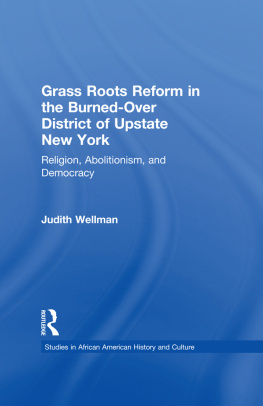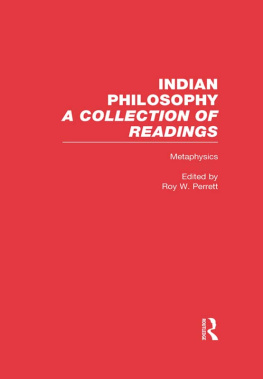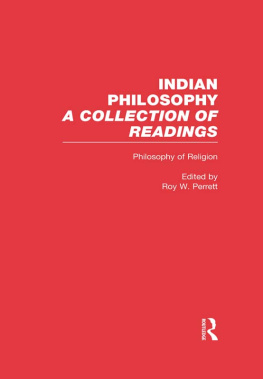First published by:
Published in 2000 by
Garland Publishing Inc.
29 West 35th Street
New York, NY 10001
This edition published 2011 by Routledge:
Routlege
Taylor & Francis Group
711 Third Avenue
New York, NY 10017
Routlege
Taylor & Francis Group
2 Park Square, Milton park
Abingdon, Oxon OX144RN
Garland is an imprint of the Taylor & Francis Group
Copyright 2000 by Judith Wellman
All rights reserved. No part of this book may be reprinted or reproduced or utilized in any form or by any electronic, mechanical, or other means, now known or hereafter invented, including photocopying and recording, or in any information storage or retrieval system, without permission in writing from the publishers.
Library of Congress Cataloging-in-Publication Data
Wellman, Judith.
Grass roots reform in the burned-over district of upstate New York : religion, abolitionism, and democracy /Judith Wellman.
p. cm. (Studies in African American history and culture)
Includes bubliographicval references and index.
ISBN 0-8153-3792-2 (alk. paper)
1. Antislavery movementsNew York (State)History19th century. 2. Social movementsNew York (State)History19th century. 3. AbolitionistsNew York (State)History19th century. 4. Social reformersNew York (State)History 19th century. 5. Afro-AmericansCivil rightsNew York (State)History19th century. 6. New York (State)Politics and government1775-1865. 7. Slavery and the churchNew York (State)History19th century. 8. EvangelistsNew York (State)History19th century. 9. New York (State)Church history19th century. 10. Christian communitiesNew York (State)19th centuryHistory. I. Title: Grassroots reform in the burned-over district of upstate New York. II. Title. III. Series.
E445.N56 W45 2000 |
326.809747609034dc21 | 00-042948 |
This dissertation was born in the turmoil of the late 1960s. The year was 1968. I was in my second year of graduate school at the University of Virginia
Martin Luther King and Bobby Kennedy had just been assassinated. The anti-war movement was escalating. Students at U.Va. (Mr. Jeffersons University, as we all called it) were holding massive rallies on the Lawn. A small group of us began to publish what we referred to hopefully as an underground newspaper, mimeographed in the basement of a local church. We called it the Sally Hemings, after Thomas Jeffersons enslaved sister-in-law, rumored to be his mistress as well. We wrote, cleverly, we thought, about law n order at the University and about justice on a larger scale.
In this context, the present echoed the past, and I decided to write about efforts to bridge racial divides in antebellum America. Specifically, I would explore the anti-slavery movement in my own section of the country, upstate New York. I would work with Norman Graebner, a fine scholar, fine teacher, and fine human being, I would write as something of an insider, for I myself was from transplanted Yankee background, raised as a Seventh Day Baptist, with spiritual values of social equality and community responsibility that reflected the 1840s as much as they did the 1960s. This denomination had adopted an anti-slavery resolution as early as 1836, and it continued its tradition of female ministers into my own time.
I began this study, of course, with Whitney Cross, The Burned-over District: A Social and Intellectual History of Enthusiastic Religion (Ithaca: Cornell University Press, 1950). Cross highlighted upstate New Yorks importance as a cauldron of enthusiastic religion in the 1820s and 1830s. Certain social and economic factors predisposed people to religious enthusiasm, he argued. Mature, post-frontier agricultural areas or cities such as Utica and Rochester, whose manufacturing base brought them into close contact with their rural hinterlands, provided the most fertile soil. But social and economic
In the 1960s, however, U.S. historians, paralleling movements in Britain and France, were exploring new approaches to social and political history. The new social and political historians adopted a grassroots perspective, often characterized by Jesse Lemischs famous phrase, history from the bottom up. By using statistical methods to work with quantitative sources at the individual, town and county level, they were changing fundamentally the way that many historians viewed the past. Social historians such as Stephen Thernstrom, Peter Knights, Stuart Blumin, and Joseph Barton were focusing on questions of ethnicity and class in urban areas in the middle and late nineteenth century. The new political historians, such as Ronald Formisano, Samuel P. Hays, Richard Jensen, Joel Silbey, and Lee Benson were developing ethnocultural explanations of voting patterns. I was drawn to this ethnocultural perspective, in particular to Lee Bensons The Concept of Jacksonian Democracy: New York as a Test Case (Princeton: Princeton University Press, 1961).
These new perspectives and techniques would dominate historical writing in the 1970s and 1980s, but in the 1960s they were still in their infancy. I, without computer resources or statistical training, was ill-prepared to join their ranks. Nevertheless, I was intrigued with the possibility of applying quantitative techniques, simple though mine must inevitably be, to the social history of the burned-over district.
To find a focus and a structure for my work, I needed primary sources about religion and reform at the community level. Reading Gilbert Barnes Anti-Slavery Impulse, I was struck by his use of anti-slavery petitions. Some of the bundles were burned for firewood in the 1930s, he noted, by a janitor in the Capitol. But how many might still exist? A few quick phone calls revealed that yes, many still survived, transferred intact to the National Archives. At my desk in the research room of the Archives, I awaited the arrival of George Perros, who emerged from somewhere in the depths of the building. Each day he brought me a new box full of petitions. They were still tied with red ribbons, now faded to pink, that some long-dead clerk had used to keep them together. Most bundles seemed never to have been opened, and I was awed by their power. It was a sense of discovery akin to opening a long-lost tomb.
About the same time, I discovered another detailed collection. These were manuscripts generated by the American Sunday School Union. Located in the Presbyterian Historical Society in Philadelphia, reports from ASSU agents











